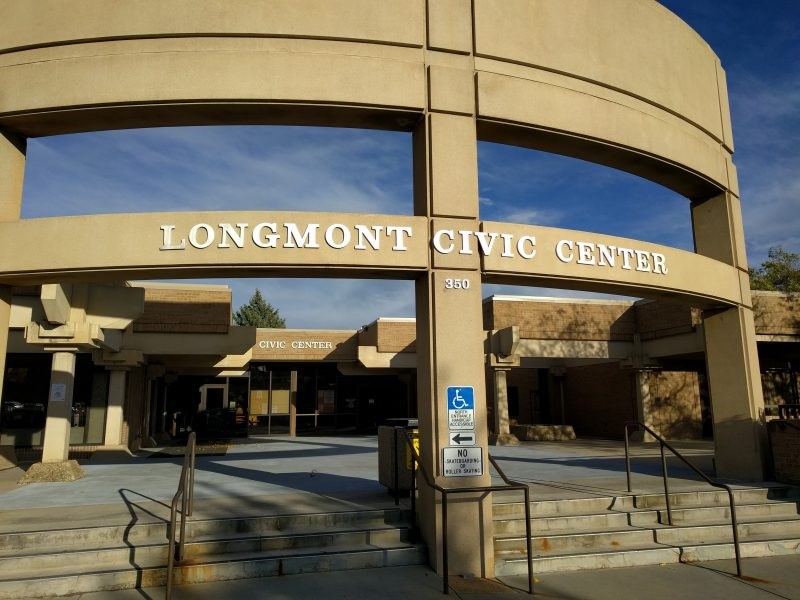This content was originally published by the Longmont Observer and is licensed under a Creative Commons license.
Written by Bethany King: City council began their session with an open public hearing. The following topics were brought up by Longmont residents.
There were many concerns about the watershed and holding new developers responsible for any damages done to wildlife, namely the prairie dogs and potential threats to St. Vrain Creek. Prairie dog advocates identified a new habitat and relocation site suitable for up to sixty dogs.
Prairie dog advocates proposed a set of regulations regarding new development; the proposal calls for a) a ninety-day public comment period when prairie dog environments are proposed for development, b) a 60-90 day delay option to find and move prairie dogs, c) a wildlife loss fee of $1500 per acre for those developers who use extermination methods other than carbon monoxide (funds would support new locations for prairie dogs), d) utilizing the active burrow count (minimum threshold of 10) rather than the current acreage count method, and e) the removal of a developer option to relocate prairie dogs to raptor rehabilitation centers as a concession because such facilities, according to advocates, maltreat prairie dogs by leaving them in cages or the cold and can decimate a population raptors will depend on for food once raptors are reintroduced to the wild.
Residents voiced support behind a 150-foot setback for all development along the corridor as it is a rich wildlife habitat. Minks, otters (which have returned after leaving the area more than 100 years ago), waterfowl, and fish were just some of the fauna listed.
There were 724 postcards, 522 signed petitions and eleven letters that residents and environmental groups delivered to the council. These petitions requested protection of the St. Vrain creek corridor and delay on developments occurring at this time.
The residents requested that holds be put on development until the following requirements are met: 1) FEMA approves a floodplain map, 2) the resilient St. Vrain project plans and funding are in place and 3) land development code update is complete, specifically sections about riparian protection and wildlife management.
Residents spoke both in support and in protest of issues regarding Vance Brand Airport. One supporter encouraged residents to consider the airport as a municipal utility. A few residents mentioned that noise pollution is a problem, residents questioned whether the expansion for jet accommodations was necessary and noted that the city could be collecting drop fees from skydiving planes as it is permissible by law.
Also proposed were more physical activity spots for Longmont children, including a roller skating rink, an ice skating rink, and baseball fields.
After the public hearing portion, Budget Manager Teresa Malloy made announcements on updates to the originally proposed 2019 budget (Proposed Operating Budget). These included changes to meter reading expenses regarding insurance and fleet lease charges. Originally this was listed as one electrical expense rather than splitting the expense between water, sewer, and electric. No extra funds were used or proposed, and instead, the cost has been split: 60% electricity, 30% water, 10% sewer. A warehouse expense was similarly allocated as one electrical expense and corrected to reflect the true division of municipal utility use.
One stand-out budgetary adjustment would propel the Longmont Museum into a new grant receiving tier. As a third-tier designated museum, grants have been distributed in sums between $20,000-$30,000 annually, as noted by Museum Director Kim Manajek. With the ascent to a second-tier designation, the Longmont Museum may now be granted funding between $150,000-$200,000 annually.
These funds are dictated by the Scientific and Cultural Facilities District (SCFD), which is a special tax district whose “primary purpose is for enlightening and entertaining the public through the production, presentation, exhibition, advancement or preservation of visual arts, performing arts, cultural history, natural history or natural sciences” (SCFD website link). Funds were established thirty years ago by deducting one cent on every ten dollars of sales revenue throughout seven counties (Adams, Arapahoe, Boulder, Broomfield, Denver, Douglas, Jefferson).
The museum and Budget Office have been working together to designate the budget funds appropriately. City Manager Harold Dominguez pointed out that, “in short, it’s a structural and accounting change.” Manajek clarified that “this doesn’t add any money to our budget…it places [the museum budget] in its own discreet, auditable fund.” Council members voiced their support after some clarifying questions and the proposed budget will reflect these new modifications.
Dale Rademacher, General Manager of Public Works & Natural Resources, came forward to clarify concerns about the Windy Gap water supply and to answer questions from the council. He spoke on the firm water supply which is currently projected to be insufficient for Longmont’s projected growth. The insufficiency relates to what is known as the “one in one-hundred-year drought,” which Rademacher described “as a drought that lasts seven years, has a certain intensity and draw down on the flow of the river.”
The cost of Windy Gap has been funded by surcharges that have been charged to all new development since the 1980s. Both Rademacher and Council member Marcia Martin assert that Longmont’s water supply is not in any danger and that Windy Gap is a storage reservoir.
Final direction was then voted unanimously to pass. The city staff will now continue their finalizing of ordinances and resolutions to adopt the 2019 budget.



